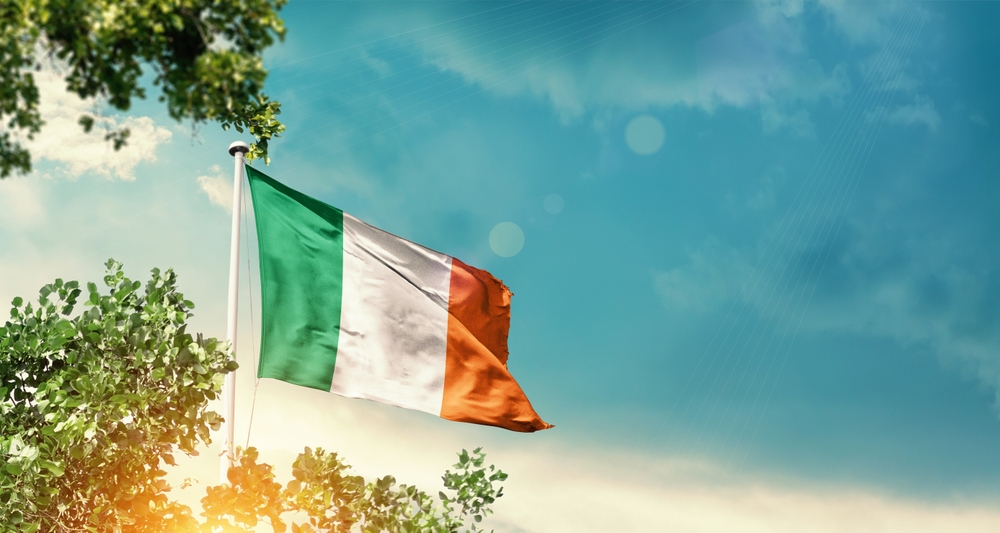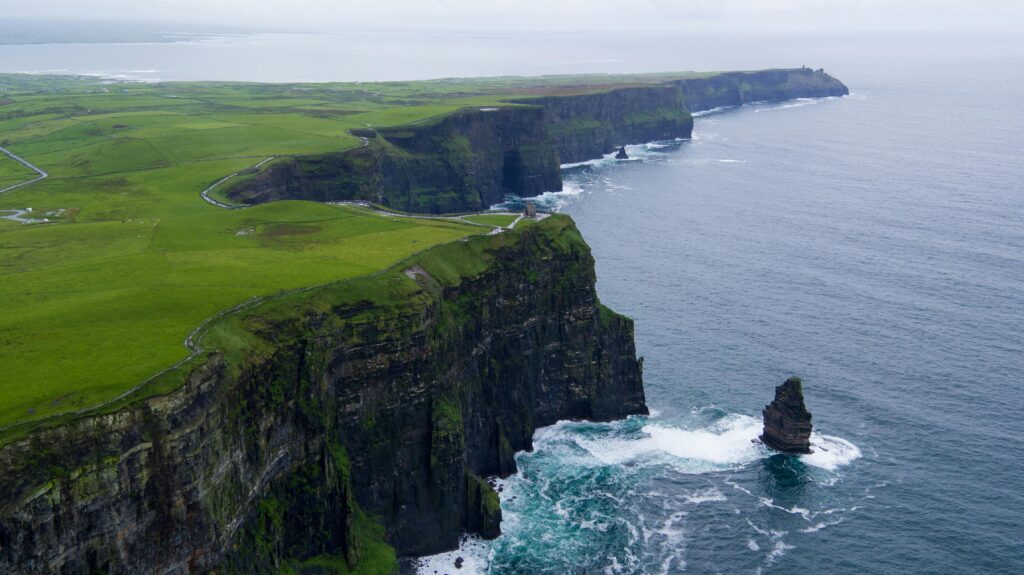Good News
Ireland Will Pay You $90,000 to Move to a Beautiful Island Home

Imagine waking up to the peaceful sound of ocean waves and being surrounded by breathtaking natural beauty. Ireland’s remote islands offer an escape from the rush of modern life, where time slows down and tradition weaves into every moment. Now, with a generous offer from the Irish government, you could be paid up to $90,000 to relocate to one of these scenic, unspoiled lands.
But this opportunity isn’t just about the idyllic views. Ireland’s offshore islands are rich in culture, history, and community spirit, yet they face unique challenges in today’s fast-paced world. The Irish government’s initiative aims to preserve these vibrant communities and help them thrive. This article will take you through what makes these islands so alluring, the challenges they face, and what it takes to embark on this remarkable adventure.

The Allure of Ireland’s Offshore Islands
Ireland’s offshore islands are more than just beautiful stretches of land; they represent the soul of Irish history and culture. These islands, about 30 in total, have long been guardians of ancient stories and traditions, from monastic settlements to old pirate tales. They are remote yet vibrant communities where Gaelic is still spoken, and life moves at a slower, more intentional pace. The unbroken connection between the people and nature, shaped by centuries of tradition, draws those seeking a lifestyle filled with simplicity and meaning. Living here is a chance to become part of Ireland’s living history.
Beyond the cultural significance, the natural beauty of these islands is undeniable. With rugged cliffs, sweeping seascapes, and unspoiled landscapes, they attract visitors year-round. It’s easy to see why over 300,000 tourists flock to these shores annually, eager to immerse themselves in the raw beauty and tranquility that contrast sharply with the hustle of city life. The islands offer a rare glimpse into a world where nature dictates the rhythm of life, a concept that resonates deeply with those looking to escape modern pressures.
However, the charm of these islands isn’t just in their landscapes. It lies in the strong sense of community and shared heritage that binds islanders together. Life on the islands encourages a deep connection between neighbors and nature, creating an environment of mutual reliance. Living here means more than just a change of scenery—it’s an invitation to be part of a close-knit community that treasures its cultural roots.
Living on an Island: The Reality
While the islands offer undeniable beauty and a sense of peace, island life also presents significant challenges. Isolation is a reality that can’t be ignored. Without bridges or easy connections to the mainland, residents are at the mercy of tides and weather conditions, which can make everyday tasks more complicated. Groceries, medical care, and even education often require extra planning. For those who value convenience and quick access to services, the remoteness of these islands may feel overwhelming at times.
That said, islanders have long learned to adapt to these challenges. The limited access fosters a strong sense of self-reliance, with communities banding together to support one another. In many ways, the isolation has also preserved the traditional Irish way of life, from farming practices to Gaelic-speaking enclaves. For newcomers, adapting to the slower pace and learning to navigate the logistical hurdles can be part of the appeal, offering a chance to build resilience and forge stronger personal connections.
Despite these challenges, island living offers an incomparable sense of freedom and tranquility. The slower pace of life allows residents to reconnect with nature and each other. The absence of daily distractions and pressures creates space for creativity, contemplation, and community engagement. Island life requires a balance of preparation and flexibility, but for those who embrace it, the rewards—both personal and cultural—are immense.

The Irish Government’s Initiative: “Our Living Islands” Policy
In response to the challenges faced by these island communities, the Irish government has launched a bold initiative aimed at sustaining and revitalizing these remote gems. The “Our Living Islands” policy, introduced in June 2023, is a decade-long effort to ensure that the islands not only survive but thrive. This comprehensive plan focuses on balancing tradition with modern needs, enabling the islands to continue being vibrant cultural hubs while addressing the growing demands of infrastructure and sustainability.
At the heart of this policy is the government’s commitment to reversing population decline and encouraging new residents to settle on the islands. The policy recognizes that these islands hold immense cultural value, and their communities are essential to Ireland’s heritage. By promoting economic opportunities—through tourism, digital work, and diversified local industries—the government aims to create a sustainable future for the islands. The policy isn’t just about preservation; it’s about ensuring that the islands continue to evolve while staying true to their roots.
Collaboration plays a central role in the success of the “Our Living Islands” initiative. The policy was shaped through consultations with islanders, ensuring that their voices and concerns were heard. This whole-of-government approach ensures that various departments, from transport to health, work together to address the multi-faceted challenges of island life. With a focus on sustainable development, the initiative also integrates technological solutions to modernize island infrastructure, ensuring the islands can prosper in the future.
The Relocation Package: What You Get
One of the most compelling aspects of the Irish government’s initiative is the financial incentive offered to those willing to move to these remote islands. The relocation package, which ranges from $76,000 to $92,000, is designed to make the transition more appealing for newcomers. These grants are part of the government’s broader strategy to restore derelict properties and breathe new life into the island communities. For those with a spirit of adventure, the prospect of turning an old, forgotten home into a personal haven comes with both financial support and the opportunity to contribute to the preservation of the island’s history.
The highest grant of $92,000 is reserved for individuals willing to take on the challenge of restoring derelict properties. These buildings, many of which are rich with historical significance, have been left vacant for years. By reviving these properties, new residents can become part of the island’s story, blending the past with their own future. The grant provides a significant financial boost, reducing the cost of renovation and making island living more feasible for those looking to settle long-term.
For those who prefer a less demanding option, the relocation package also offers grants of $76,000 for homes on the mainland. While this option provides a more convenient living arrangement, it still allows participants to engage with island life. Whether restoring a derelict building or opting for a more modern home, the program is about more than just financial incentives—it’s an invitation to be part of a community dedicated to preserving a unique piece of Irish heritage.
Key Actions for Island Development
A critical component of the “Our Living Islands” policy is its actionable framework. Over the next decade, the government plans to implement specific measures to enhance the quality of life for islanders and make the islands more accessible and sustainable. One of the most immediate improvements is the expansion of high-speed broadband to remote areas. This development is a game-changer, opening up opportunities for remote work, digital business, and online education—crucial tools for maintaining modern life while respecting the islands’ traditional way of living.
Healthcare is another vital focus of the policy, with the government piloting eHealth Pods that bring online medical consultations directly to islanders. These pods, located at Broadband Connection Points, offer residents access to health services that would otherwise require long and difficult trips to the mainland. Improving healthcare access is not just about convenience; it’s about ensuring that the isolated populations can receive timely medical attention, which is crucial for the overall well-being of the community.
Equally important is the government’s plan to foster greater community participation and governance. By creating dialogue forums between islanders, local authorities, and government agencies, the policy empowers residents to take an active role in shaping their future. This platform ensures that islanders have a voice in the decision-making processes that affect their lives, from infrastructure projects to cultural preservation efforts. Through this collaborative approach, the government aims to create sustainable, self-sufficient island communities that remain vibrant for generations to come.
The Islands: A Closer Look at What Awaits
Each of Ireland’s remote islands has its own personality, shaped by centuries of history, culture, and geography. Inis Mór, the largest of the Aran Islands, is known for its dramatic cliffs and ancient stone forts like Dun Aengus. Its strong Gaelic culture and stunning landscapes make it a popular destination for tourists and a dream for those seeking a blend of adventure and tradition. But living on Inis Mór requires adapting to a rhythm dictated by the sea, as access to the mainland is limited by ferry schedules and weather conditions.
Inis Oírr, the smallest of the Aran Islands, offers a quieter, more intimate experience. With its traditional thatched cottages, winding lanes, and peaceful beaches, it’s a place where time seems to stand still. The close-knit community welcomes newcomers, but the island’s isolation means you’ll need to plan carefully for essential supplies and services. Life here is about embracing simplicity and forging deep connections with both people and nature.
Achill Island, though connected to the mainland by a bridge, is still a world apart. Its sweeping landscapes of coastal cliffs, lakes, and sandy beaches offer a backdrop for a thriving artistic community. While the island is more accessible, its remote location still presents challenges in terms of healthcare and education. Each of these islands offers something different, but all share a common thread of resilience, beauty, and cultural richness, waiting for new residents to explore and appreciate.
Relocating to a Remote Island: What to Consider
Moving to one of Ireland’s remote islands is not a decision to be taken lightly. While the financial incentives and picturesque landscapes are enticing, life on these islands requires a shift in mindset and a willingness to embrace the challenges that come with isolation. Self-sufficiency becomes essential, as the limited infrastructure means that residents often need to plan far ahead for daily necessities. From food supplies to healthcare, every aspect of life must be carefully managed around the tides and weather conditions.
Adapting to the tight-knit communities can be both rewarding and challenging. Island life fosters close relationships, but it also requires newcomers to be proactive in integrating themselves into the social fabric. Participation in local events, helping neighbors, and respecting traditions are all crucial to becoming part of the community. In return, islanders offer a unique kind of support—one based on mutual trust, shared experiences, and a deep connection to the land.
Typos, corrections and/or news tips? Email us at Contact@TheMindUnleashed.com
